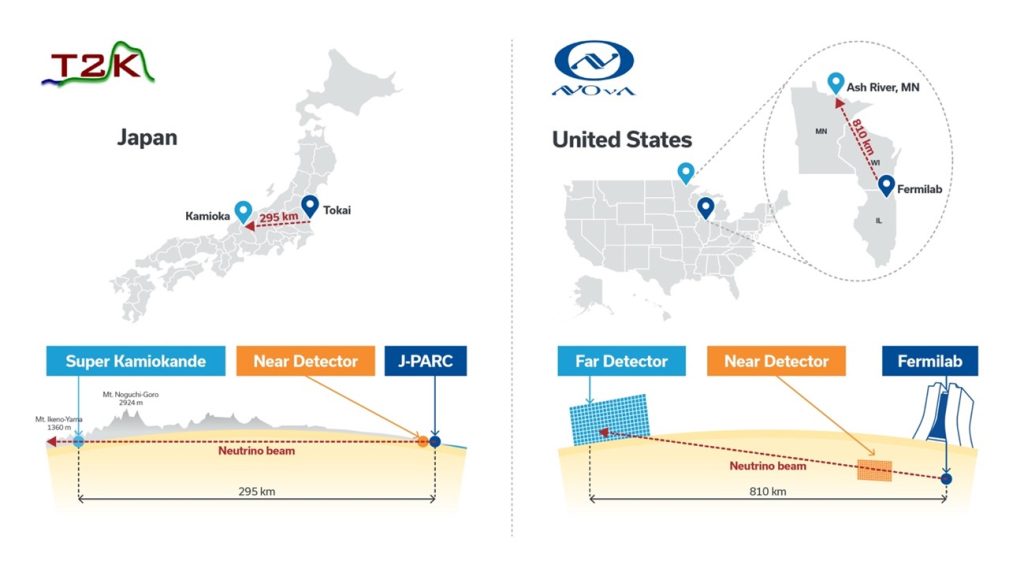The T2K experiment in Japan and the NOvA experiment in the United States conducted a joint analysis and published their first results in the journal Nature. Both are long-baseline neutrino oscillation experiments using accelerators, and by leveraging their different baselines and energy conditions, they achieved precision measurements of neutrino oscillations. As a result, they succeeded in reducing the uncertainty in the differences between neutrino masses to below 2%. Although the ordering of the three neutrino masses is still unknown, their results show that depending on this ordering, the magnitude of CP symmetry violation—a difference in behavior between particles and antiparticles—would be strongly constrained. This achievement marks an important step toward uncovering CP symmetry violation in neutrinos and the origin of the matter–antimatter asymmetry in the universe. The joint analysis combined ten years of T2K data collected since 2010 and six years of NOvA data collected since 2014, and it also demonstrates the strength of collaboration between two international experiments that are competitive yet complementary.

Publication Details
Title: Joint neutrino oscillation analysis from the T2K and NOvA experiments
Authors: S.Abubakar et al. (NOvA and T2K collaboration)
Journal: Nature Vol. 646, pp.818-824, on October 22, 2025
https://www.nature.com/articles/s41586-025-09599-3
Please refer to the press release for details.
Contacts
High Energy Accelerator Research Organization (KEK) Public Relations Office
e-mail: press@kek.jp
